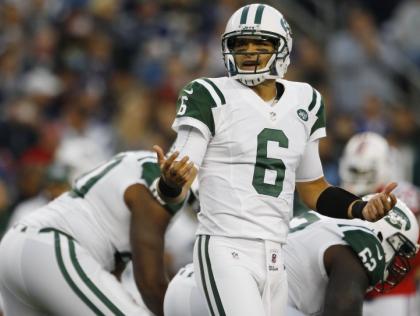 Getting ready to watch football with the NFL Red Zone, so thankfully I am not tied down to the Jets-Rams.
Getting ready to watch football with the NFL Red Zone, so thankfully I am not tied down to the Jets-Rams.
TV football in New York is absolutely terrible without Red Zone because you’re tied into two teams each week, but I digress.
I was thinking which is the most dysfunctional New York franchise, the Mets or Jets?
The Jets are in the news because the Mets have faded into the woodwork until February.
The biggest disparity between the teams is economic, despite each being in a sport with sound financial footing. Each NFL team – as with each MLB team – has a predetermined foundation in the tens of millions before selling a single ticket. Both have loaded ownerships, but the difference is Woody Johnson is willing to spend while the Wilpons make their decisions against the backdrop of the Madoff scandal.
The fundamental difference is the Jets are willing to spend, evidenced by first pursuing Brett Favre, and then giving loaded contracts to Mark Sanchez, Tim Tebow and Derrelle Revis.
In fairness, the Mets showed a similar desire with Johan Santana and Jason Bay, not to mention Oliver Perez and Francisco Rodriguez, but the last two years have been on an austerity kick.
The most obvious similarity is both share the city with a more successful and stable older brother against whom they’ll never match.
Another common thread is the lack of direction from the top as to where and how to spend.
The Mets’ bullpen has deteriorated along with their outfield and offense. Meanwhile, the Jets’ offensive line is weak, along with their offensive skill players and pass rush.
The bullpen and offensive line are fundamental building blocks in the respective sports, and neither team can compete if things remain the same.
The direction of both teams is like the Washington D.C., roadmap – it goes in all directions.
The Mets failed to build their bullpen after the 2007 collapse, and then moved into Citi Field with the stated goal of building with pitching and defense only to sign Bay.
It has been downhill since, with the real possibility of losing David Wright and R.A. Dickey. If they do, the Mets will begin another rebuilding program, just as the Jets could be after this season if they continue to implode and Johnson fires GM Mike Tannenbaum and coach Rex Ryan, which could lead to the trading of Sanchez.
After the collapses of 2007 and 2008, preceded by losing in the 2006 NLCS, the Mets severely overestimated their team and attempted to patch their holes with veterans – Santana, Rodriguez, Bay, etc. – but are now going the farm system route.
Trouble is, there’s little underneath that’s major league ready.
Meanwhile, the Jets thought they’d compete with the Favre signing, but after he left began the Sanchez Era.
With a strong defense and sound running game – you do remember “Ground and Pound’’ don’t you? – to complement Sanchez, the Jets played, but lost, consecutive AFC Championship games. They overestimated themselves in defeat.
How the Ryan tenure began is how NFL teams are usually built. They attempted to open up their defense, but did so at the expense of the running game. In addition, the Jets never complemented their strong secondary with a pass rush.
Then, with their quarterback’s confidence fractured, the Jets inexplicably traded for Tebow for a fourth-round pick and then signed him for three years. Adding Tebow meant adding a quarterback who needed a different offensive system.
As the Mets had a disjointed clubhouse, the Jets had a poisonous locker room, marked by snakes Santonio Holmes and Antonio Cromartie. The backbiting continued this week with the verbal torching of Tebow.
Your guess is as good as mine as to determining what the Jets want to do with their inept offense, which has not been helped by their porous defense, which gives up over 150 yards a game on the ground.
Also, both teams play in divisions with rivals they can’t seem to catch in the Phillies and Braves for the Mets and Patriots for the Jets.
That brings us to a final similarity: It could be a long time before the Mets or Jets are relevant again.













